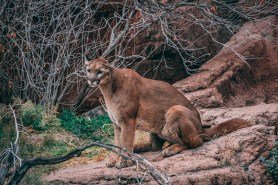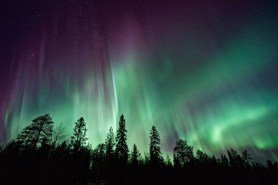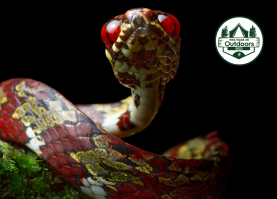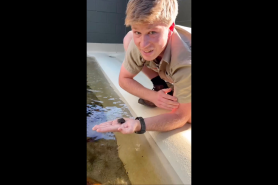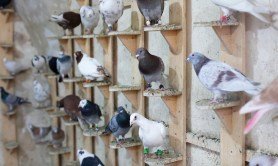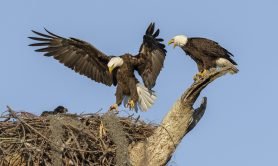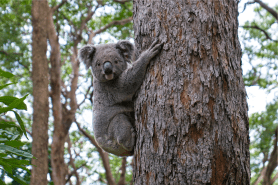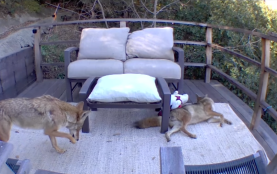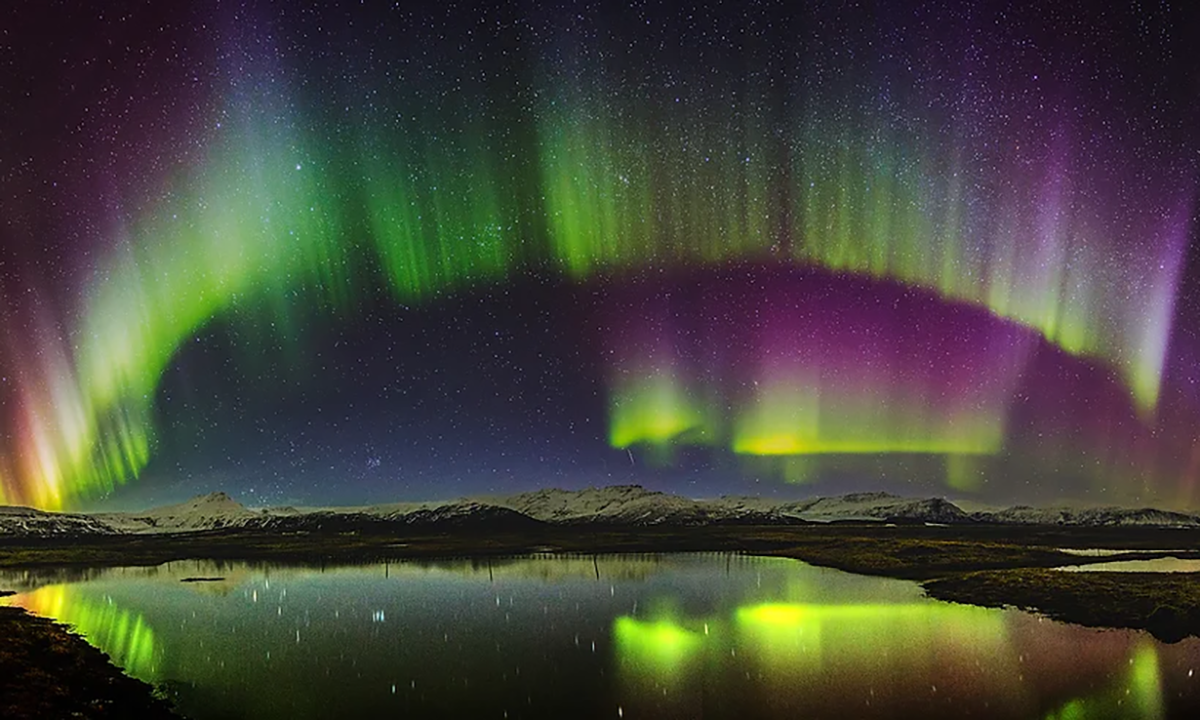

Carlos Gauna is the creator of popular YouTube channel TheMalibuArtist. A professional photographer and FAA-certified drone pilot with a passion for nature, specifically sharks, you may already be familiar with his popular and unique drone videos.
Videos by Outdoors

Based in Southern California, Carlos’ work has been featured in National Geographic, and Discovery Channel, and is the creator of Sea of Cortez Photography Immersion experiences. Gauna was one of the first photographers to capture sea life from above using drones, giving more accurate information to biologists about animal behavior. His work and YouTube channel helps bring awareness to wildlife and nature, and he frequently collaborates with scientists.
Tell me a little bit about yourself.
I was actually born in El Salvador and immigrated here under asylum with my mom when I was eight months old in the 1980s, because there was a terrible war going on down there. After that I moved to New Mexico. Basically, I graduated high school there and then I did my undergraduate and graduate work in the state of Oklahoma. I always found myself always hanging out at the lake and being by the water so it’s like, hey, I took a leap of faith and came out to Malibu and I lived in Malibu for several years. I just fell in love with the Pacific Ocean and I ran my photography business out here.
How did you get started as a photographer?
Well, for me, I started in portrait photography. I was a portrait photographer for one of the largest studios in Oklahoma and Texas. And I used to just do portraits and then I started my own independent business and I spent 16 years doing weddings. It’s very challenging because it’s in high demand, right? And it’s a lot of work. But that process of learning photography, old style Rembrandt lighting, understanding the exposure triangle, understanding how to take photos and various lighting conditions, weddings. I can’t tell you how valuable it was to be able to shoot on the fly, to be able to know my manual settings. All of that technical stuff instantly without any auto settings so that I can shoot wildlife photography. So that’s really where I started.
In the early days of Instagram, a lot of people were drawn to my landscape photography. And and then one day I, you know, started filming sharks, and using that to do something that nobody at the time was doing. So I kind of just wanted to focus on that niche and use a tool (drones) that everybody sees as a toy. You see it as a serious tool for cinematography or a serious tool to capture data. And now it’s the tool.
When you started making photography and videos, were you naturally focused on nature?
I started in nature and my very first photographic outing was lightning – chasing storms – in Oklahoma. I was in college and when I got a SLR in my hands in a photography class, I was just completely immersed with the art of photography and started with lightning bolts. I remember my very first shot of a lightning bolt and I was so excited and I’ve been doing it since.
Tell me about your first experience capturing a shark on film.
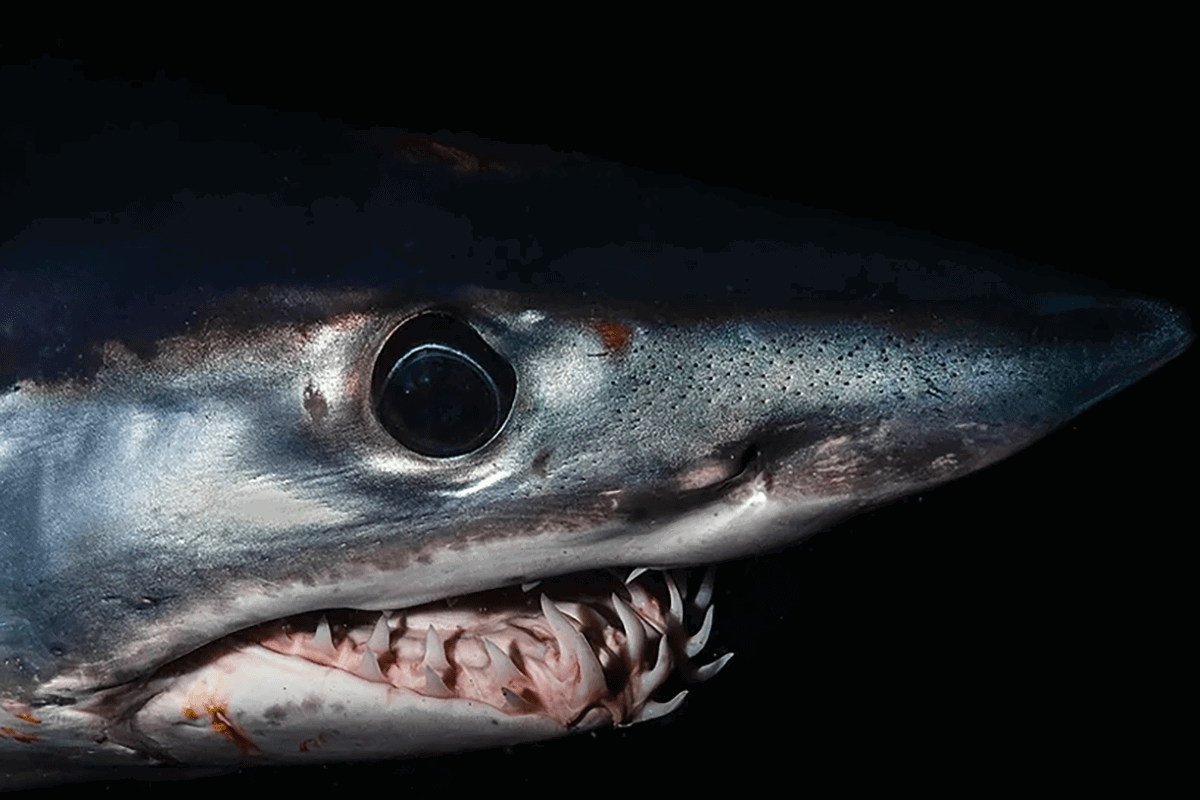
It amazed me. It was just amazing because it kind of gave me a sense of accomplishment. Oh, I found a shark. Oh my gosh. This stuff works, right? And then your mind just starts thinking: Well, what are the sharks doing during the day? What did he do before?
Science seemed to naturally become a part of your photography.
The more I started going down that rabbit hole of their behaviors, the more I started noticing trends and their movements. To get some of those shots you really have to understand how a shark moves…you can just tell when they get pointed when they’re on a mission because most sharks generally are just hanging out. You can tell a lot by where their fin position is. You get that through hours of watching them, but when there is a shark interested in something, when it’s doing something, it’s very obvious to the trained eye that there’s something different here. Something could happen. If there’s a piece of kelp somewhere, if there’s a piece of whatever floating I’m always aware of that so that you can position the camera.
What’s the process of finding these animals to shoot?
It all started with whales. So, at the dawn of consumer drone photography, I started using them to find large animals, whales, because they’re easier to see. I mean they have to come up and they’re big. I started at Point Dume in Malibu,, one of the best places to see a gray whale in the world. The more I filmed them, the more I wondered, “What else could I find?” So on one windy evening, I had used up all my batteries. And I happen to say, “you know what? I’m just gonna hang out and watch the sunset.” And I went to the top of Point Dume and saw a very large great white shark. And that kind of set off a light bulb in my head. On the drive home, I started thinking, you know, maybe I’m looking for the wrong species here.
I started searching the Internet and there was hardly any Drone footage of sharks, it’s all underwater. So I just put on my efforts on my research and, and looking into where shark encounters happen along California’s coastline. There was a nice website by Ralph Collier called the Pacific Coast Research Committee, it went back all the way to 2002. And what it did is take regular incidents of shark encounters and compile the stories of where those happened. That’s really where my baseline was.
Okay, so there’s been 10 shark incidents at this beach in the last five years. What if I just go there? And, and that’s really how the process started. So I started going down the list of beaches, and sure enough, I started seeing more and more and more sharks and started getting a knack for finding them, seeing characteristics of where sharks would exist more often than other beaches – these kind of areas – and through those observations, it’s made my job a lot easier to finding sharks.
When you go out, do you always find a shark?
Not always. But here in Southern California, I would say. Nine out of 10 times. Generally speaking, I can apply that number to the world. I went to Brazil and the very first day I filmed a tiger shark predation attempt. There seems to be a natural tendency for sharks to aggregate in certain specific areas or at least use them as highways and I’ve kind of become an expert at finding those.
Tell me about the story of the shark reacting to the paddleboarder.
It’s a guy that lives locally and he happened to be near a shark. He didn’t know it was there. A small shark, a six or seven foot juvenile. The next day, I happened to run into a 13 to 14 foot adult shark. And he happened to say, “Hey, how big is that?” He’s like “Can I paddle out there?” and I said, it’s your choice. But I didn’t encourage him. He was gonna be paddling anyways, because he does his daily paddle. Hey, you see my drone come by, take a look, it would be really good for the size comparison. The board is 11 feet.
I let the surf shop owner know that there are some big sharks around so we can actually alert people not to get too comfortable. I don’t know if you’ve ever been in the water with a great white or with sharks in general; they generally don’t want anything to do with us. Some adults are a little bit less predictable but they’re very very cautious. Hollywood has it completely wrong.
You seem passionate about animal conservation.
It’s very easy to fall into the social media trap of making it about yourself. The one thing that I always try to tell, especially younger viewers, is that it’s okay to enjoy nature. Go look at a shark, go look at a whale, things like that… but if you’re truly interested in the subject, you’re not gonna make it about yourself. One thing that we see on social media a lot is the failure to make it about the actual shark or the actual bear or whatever it may be. It’s often about using nature as a background, you know what I mean? When it comes to interacting with the animals, I live by a general rule that you never touch the wildlife.
This kind of awareness is great with all this footage of people swimming with sharks and being there, taking selfies of sharks or somebody else filming a big shark. It’s obvious that these sharks aren’t out there trying to kill people all the time. But they are wild animals and there’s lines that we just shouldn’t cross when it comes to wild animals. You know, there are regulations with whales. For example, where you don’t cross a whale’s path, if you divert a whale’s path, that’s actually a federal offense.
Who is your inspiration?
You know, for me I have always been inspired by David Attenborough myself.
Photography-wise, there’s a few Nat Geo guys that I really like, Paul Nicklen, of course, he’s a fabulous photographer.
I think every single category has their guy right? Underwater cinematography, Joe Romeiro. Nobody does anything underwater as good as Joe does. His color is incredible.
Telling a story about the Amazon in Brazil – Cristian Dimitrius. Guy’s a legend down there. You know, sitting in the jungle, sitting in a river, for the shot. The kind of stuff he does, for hours upon hours, to get that one shot is what it takes to get a sleeping anaconda to finally come out. It’s amazing.
What would you say to someone who is inspired by you and maybe wants to get started?
The number one thing that you shouldn’t do is focus on the equipment. I answer, “What kind of drone do you use?” 10 times a day. And that’s not the right approach. The right approach is to ask yourself what is my process? Like what can I improve with the tools I have? Yeah, drones are great, but you can film everything I’m filming with any consumer drone.
It’s really about learning the technical aspects of film. And so I say, Get your baseline knowledge. Learn the exposure triangle, learn frame rates. And most importantly, learn about your subject. So if you want to photograph lions, be a nerd on lions. Know when they sleep. Know when they eat. Half of all the photographs that you’re ever gonna take are about knowing when an animal sleeps and eats. If you know where an animal eats, then plant yourself where it eats and you’re gonna get some amazing shots. Well in my case, “What do sharks eat here in California?” They eat stingrays. So what do I do? It only makes sense to go where the stingrays are and sit there for hours and eventually a shark’s gonna show up.


